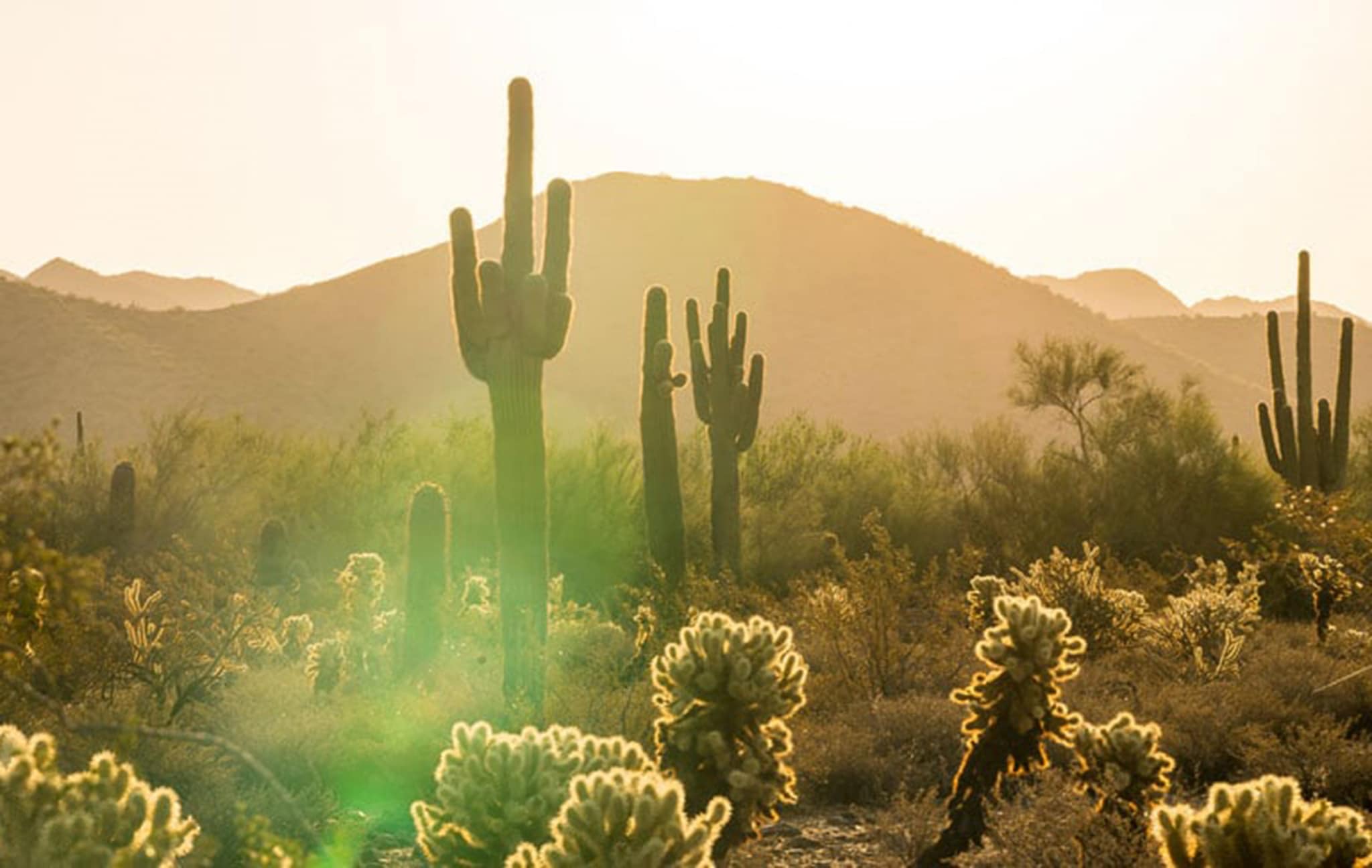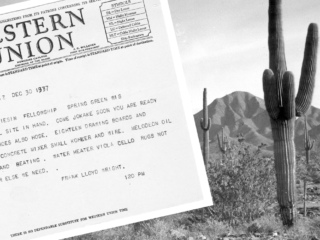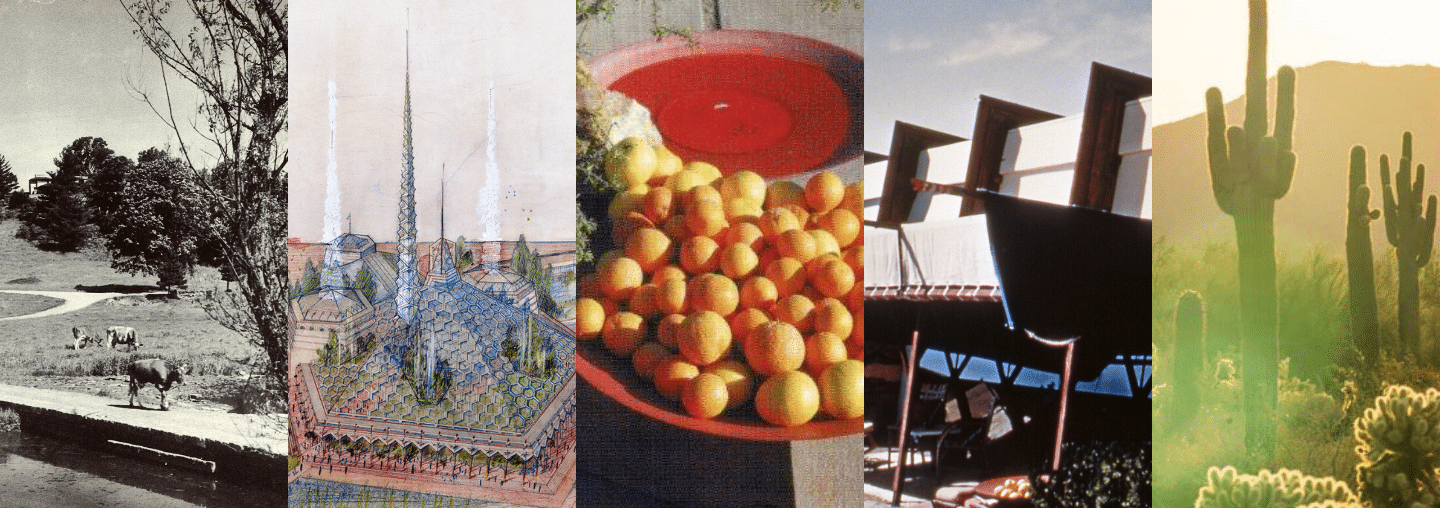
The 5 C’s of Arizona at Taliesin West
Frank Lloyd Wright Foundation | Feb 14, 2020
In celebration of Arizona’s 108th statehood birthday, we’re highlighting Taliesin West’s uniquely Southwestern roots through the “Five C’s” of Arizona.
Frank Lloyd Wright’s deep connection and fondness of Arizona first began through his frequent visits to the state throughout 1920s. In 1937, Wright sent a telegram to the Fellowship in Wisconsin, telling apprentices of a beautiful new desert site in Arizona that would later become the site for Taliesin West, his winter home and desert laboratory. Today, Wright’s signature architectural influence can be seen all over the Grand Canyon State.
In celebration of Arizona’s 108th statehood birthday, we’re highlighting Taliesin West’s uniquely Southwestern roots through the “Five C’s” of Arizona. According to the Arizona State Library, Archives, and Public Records, in the early years of the state, the “Five C’s” (copper, cattle, cotton, citrus, and climate) served an important role in the economy, with many jobs in agriculture, ranching, and mining. Although the “Five C’s” only represent a modest impact on Arizona’s economy today, they still play a great cultural role.
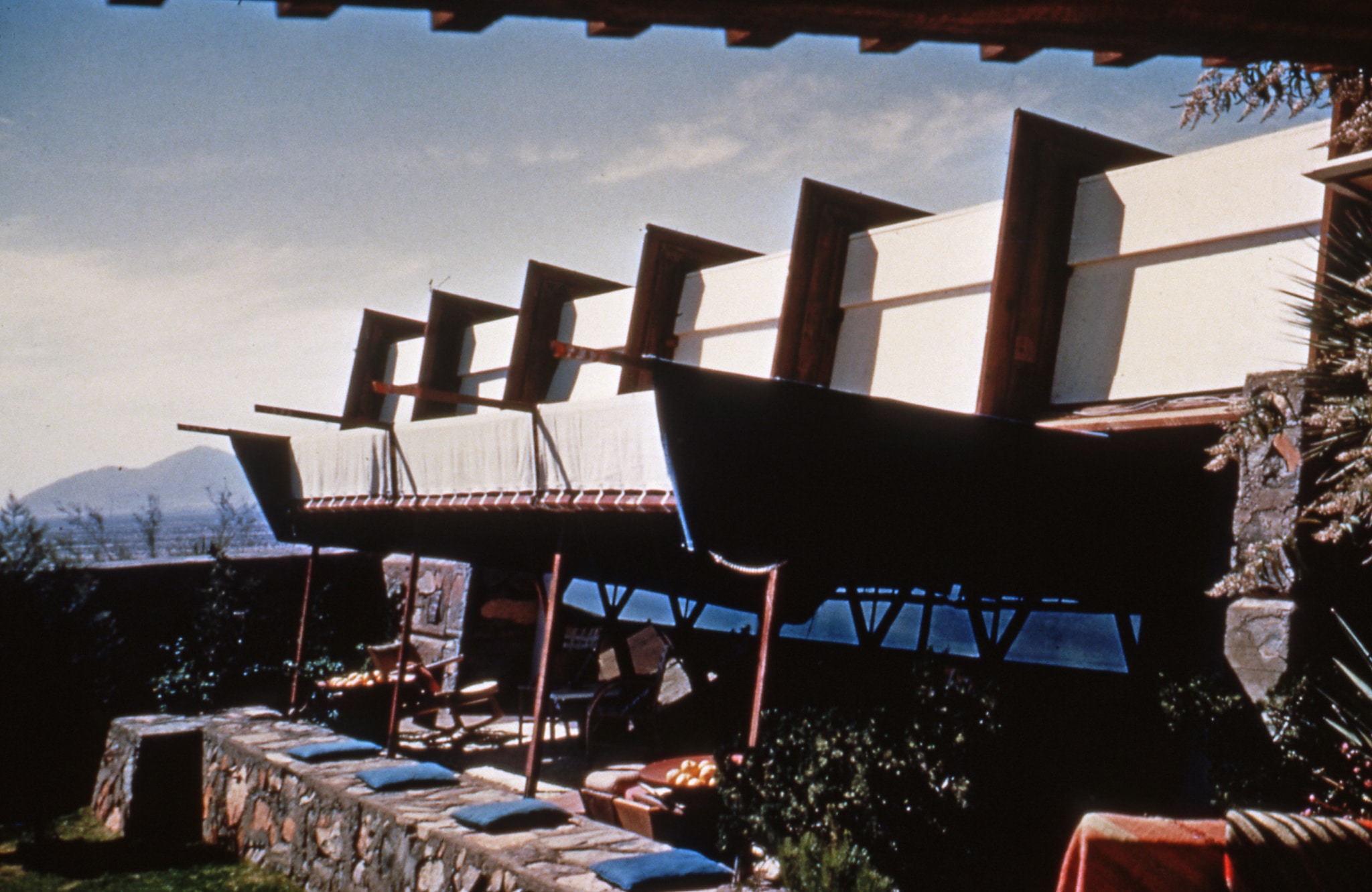
Exterior view of the Garden Room at Taliesin West with the canvas sides raised in spring 1949
COTTON
Canvas, a durable material made out of cotton, was used throughout Wright’s experiment in the desert, most notably for roofing in the Garden Room, Office, Pavilion, and Drafting Studio. The canvas panels gave life and poetry to the buildings, allowing for stunning diffused natural light to come through.
Wright felt this light was perfect for creating a strong link to the landscape and exterior environment. Using operable panels, there was superior natural ventilation, and an embodiment of the essence of the site as a camp. The use of canvas is an example of how Wright experimented with materials to achieve unique, masterful design.
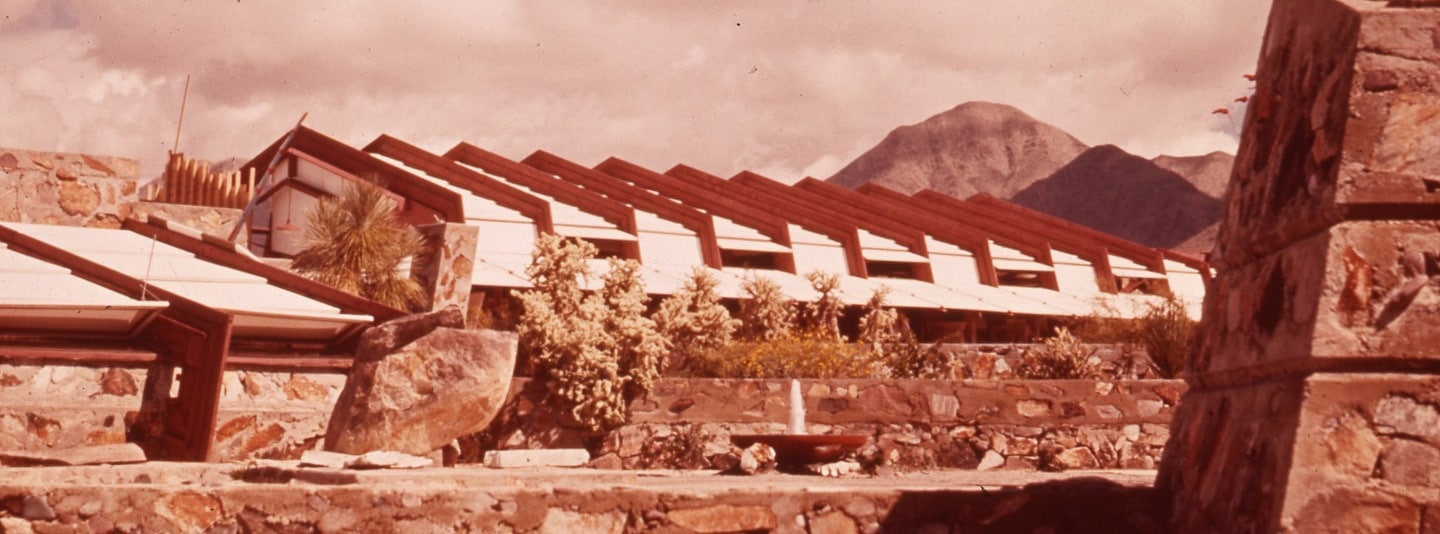
The canvas roof on the Music Pavilion at Taliesin West
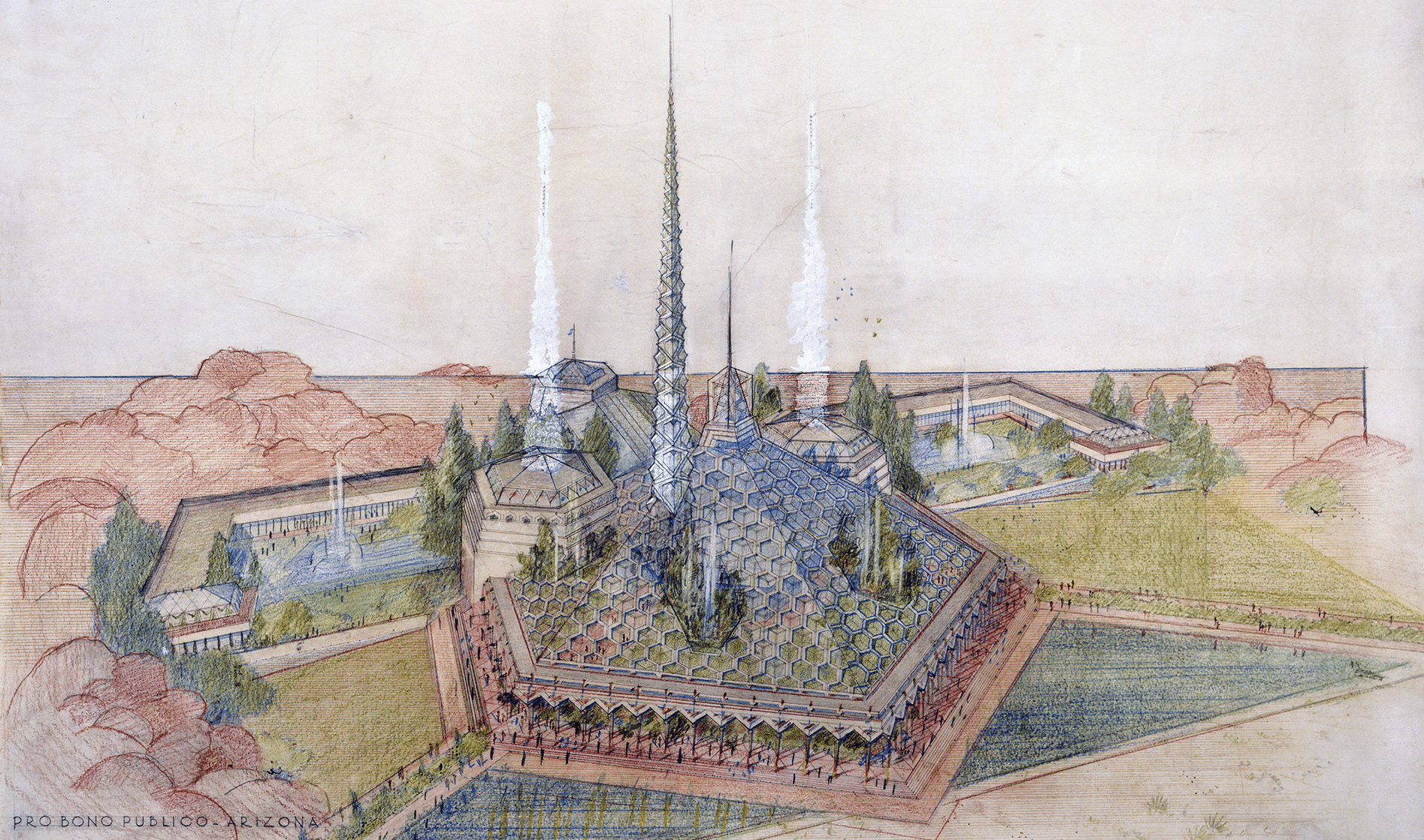
“Oasis” Frank Lloyd Wright’s unbuilt design for the Arizona State Capitol
COPPER
In several of his later-career projects, Wright often specified copper roofs, including in the David and Gladys Wright House and the unbuilt design for the Arizona State Capitol building. Although copper wasn’t always utilized in the final designs, Wright felt it was important to incorporate native materials into his works, and since Arizona was one of the leading copper producers in the nation, it made sense for him to design structures that incorporated this local material.
CITRUS
At Taliesin West, just outside of the Music Pavilion, there is a large citrus grove that was harvested in the winter. Citrus fruits were well-liked by the Wrights and were used as a kind of decoration throughout the site in bowls and in varying places around campus.
Before the citrus grove was planted at Taliesin West, Wright would often send apprentices to the citrus grove at the David and Gladys Wright House to collect oranges and lemons. Today the citrus trees at Taliesin West continue to thrive and bear ripe oranges, lemons, and grapefruits.
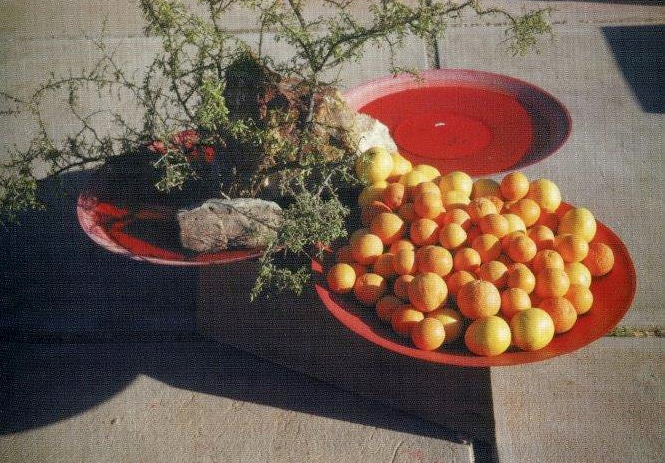
Citrus was used as decoration throughout Taliesin West.
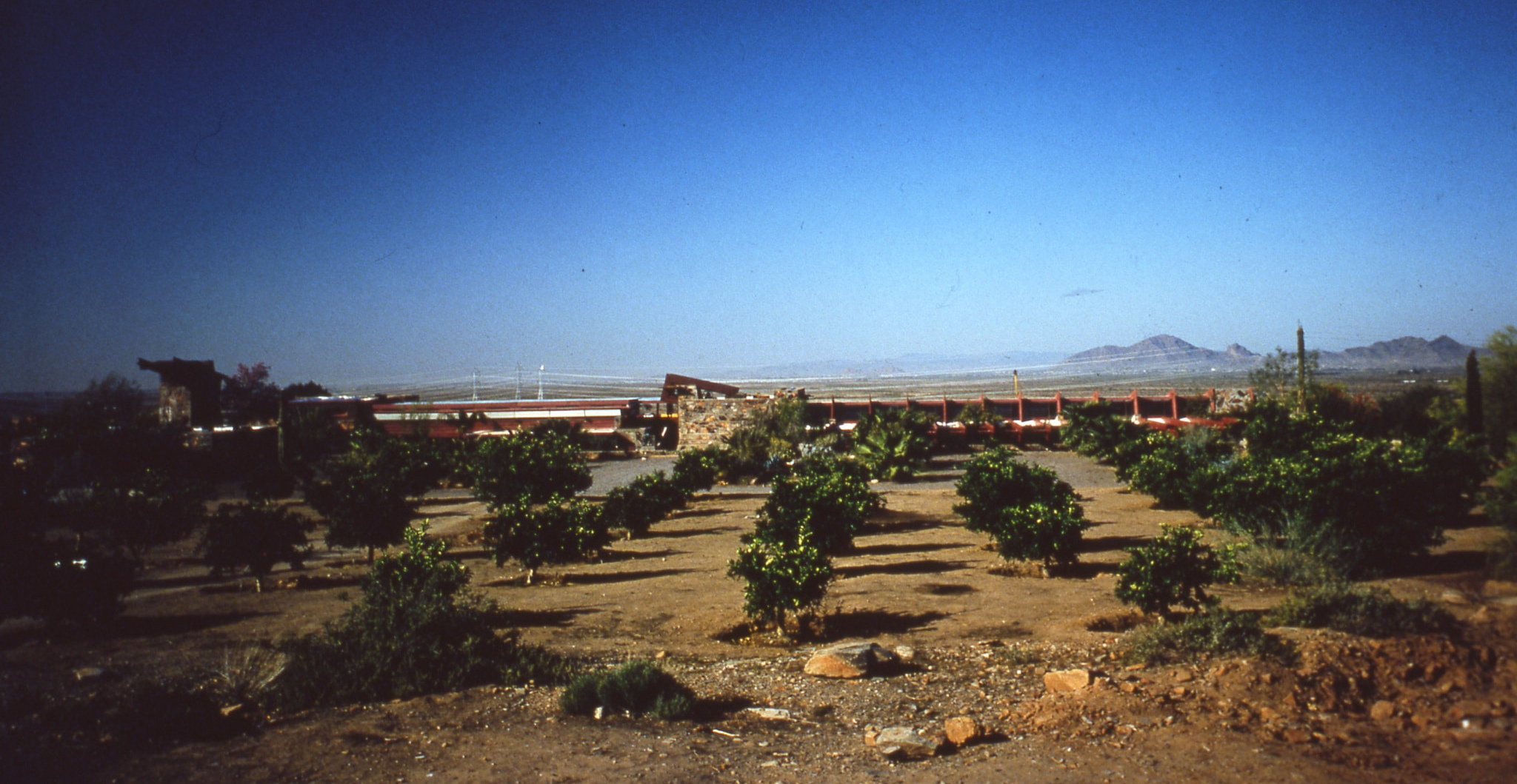
The citrus grove at Taliesin West in early stages
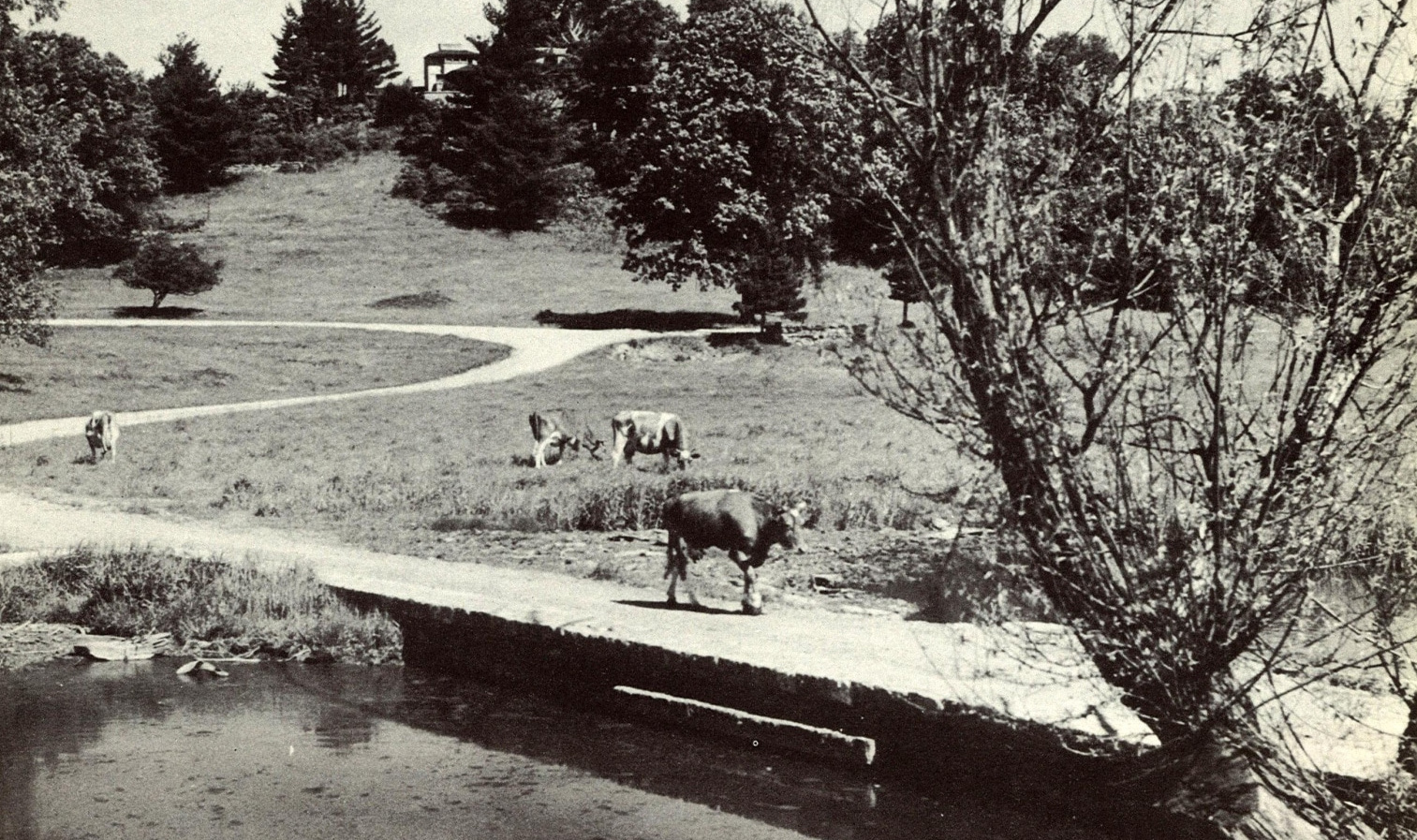
Cows roaming at Taliesin in Wisconsin, 1955
CATTLE
Although there wasn’t cattle at Taliesin West, there were cows and other livestock at Wright’s farm at Taliesin, his estate in Spring Green, Wisconsin. Wright grew up spending many summers at his uncle’s farm in Wisconsin and naturally included spaces for farm animals. Wright wrote about tending and milking the cows at his uncle’s farm in “An Autobiography.” The milk and dairy products produced by the cows at the Taliesin farm were sold in nearby Chicago.
CLIMATE
Wright was fond of Arizona’s dry, warm climate, and often wrote about his love for the desert. It was the state’s climate that encouraged Wright to develop his desert camp, after he faced a near-fatal bout of pneumonia and his doctor recommended he spend winters in the Arizona heat and sunshine.
“Climate means something to man. It means something in relation to one’s life in it. Nature makes the body flexible and so the life of the individual invariably becomes adapted to environment and circumstance.” – Frank Lloyd Wright, The Natural House, 1954
